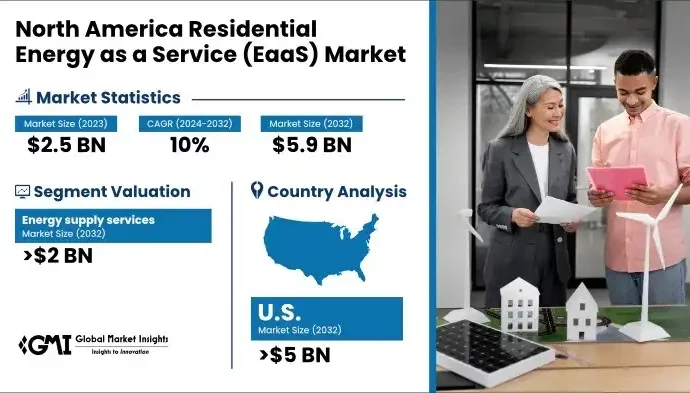Introduction Homes around the world are embracing smart solutions to save energy and reduce bills. The global residential energy management market supports this shift. It includes tools and services that help homeowners monitor and control energy use. From smart thermostats to solar panel integration, these solutions make daily life easier and greener. As concerns about
Introduction
Homes around the world are embracing smart solutions to save energy and reduce bills. The global residential energy management market supports this shift. It includes tools and services that help homeowners monitor and control energy use. From smart thermostats to solar panel integration, these solutions make daily life easier and greener. As concerns about climate change grow and electricity costs rise, demand for home energy management systems soars. In this article, we explore market size, share, strategies, key manufacturers, emerging trends, and a SWOT analysis through 2032. You will learn how this market is evolving and why it matters to homeowners, investors, and energy companies alike.
Market Overview
The residential energy management market covers hardware, software, and service offerings. Homeowners can track electricity use, identify waste, and schedule appliances for off-peak hours. In 2023, the market was valued at around 5 billion US dollars. By 2032, it is expected to grow to nearly 15 billion US dollars, at a compound annual growth rate of about 12 percent. Growth is driven by rising energy prices, supportive government policies, and growing awareness of sustainability. Utilities partner with technology firms to offer bundled solutions. This collaboration expands market reach and brings more affordable options to consumers.
Rise of the Global Residential Energy Management Market
In recent years, homeowners and utilities have turned to smart systems that monitor and control energy use in houses. As electricity costs climbed and concerns over climate change grew, more people installed smart thermostats, energy dashboards, and load-control devices. According to Zion Market Research, the global residential energy management market was valued at USD 4.17 billion in 2023 and is projected to reach USD 14.20 billion by 2032, growing at a CAGR of 14.58%. This rapid rise reflects falling device costs, wider broadband access, and stronger government incentives for energy efficiency.
Benefits of Residential Energy Management Systems
Installing a home energy management system brings clear advantages to both homeowners and the planet. Users can track real-time electricity use, spotting wasteful habits—like leaving lights on or running HVAC systems when no one is home. Automated schedules and remote controls help shift heavy loads (such as washing machines or EV chargers) to off-peak hours, cutting bills by taking advantage of lower rates. Over time, these savings can cover the cost of the system itself. At the same time, reduced demand eases stress on power plants and lowers overall greenhouse-gas emissions.
Role of Energy Management in Modern Homes and Grids
Residential energy management systems serve as the interface between homes and the larger electrical grid. They collect data from smart meters, solar inverters, and IoT sensors, then present clear dashboards that homeowners and utility operators can use. In many areas, utilities offer demand-response programs: during peak events, they automatically adjust thermostats or shift appliance schedules in enrolled homes, balancing load without major outages. By coordinating tens of thousands of homes, these systems help stabilize grids and integrate more renewable sources—like rooftop solar and home batteries—into everyday energy use.
Key Growth Drivers
Several factors are propelling the residential energy management market:
- Increasing Energy Costs: As electricity rates climb, homeowners seek ways to reduce monthly bills. Energy management systems provide real-time feedback on usage, helping families cut waste.
- Smart Home Adoption: More people install smart devices such as thermostats, lighting controls, and smart plugs. These devices connect to energy management platforms, making overall home control seamless.
- Government Incentives: Many countries offer tax credits, rebates, or low-interest loans for installing energy management solutions and renewable energy systems. These incentives lower the upfront cost for homeowners.
- Environmental Awareness: Concern over climate change drives consumers to choose greener lifestyles. By optimizing home energy use, families reduce their carbon footprint and support cleaner energy grids.
- Advances in IoT and AI: The Internet of Things and artificial intelligence enable smarter, predictive energy management. Systems learn user habits and adjust settings to maximize efficiency without sacrificing comfort.
These drivers highlight why residential energy management is gaining traction among homeowners and businesses.
Market Segmentation
The market can be segmented by component, solution type, end user, and region:
1. By Component
- Hardware (smart thermostats, sensors, meters)
- Software (energy management platforms, analytics tools)
- Services (installation, maintenance, consulting)
2. By Solution Type
- Energy monitoring systems
- Home automation systems
- Demand response platforms
- Renewable energy integration
3. By End User
- Single-family homes
- Multi-family residences
- Gated communities and housing societies
4. By Region
- North America
- Europe
- Asia Pacific
- Latin America
- Middle East and Africa
Energy monitoring systems held the largest share in 2023, as they are the entry point for most consumers. Renewable energy integration is the fastest growing segment, driven by solar panel and battery adoption.
Key Strategies for Market Players
Leading companies in the residential energy management market adopt these strategies:
- Partnerships and Alliances: Energy firms team up with smart device manufacturers and software providers. These collaborations create integrated offerings that address multiple homeowner needs.
- Product Innovation: Companies invest in developing intuitive mobile apps, voice control features, and predictive energy-saving algorithms. User-friendly interfaces drive higher adoption.
- Geographic Expansion: Firms enter emerging markets where energy costs are rising and smart home awareness is growing. Local partnerships help navigate regulations and cultural preferences.
- Subscription Models: Instead of one-time hardware sales, some companies offer subscription plans that include hardware, software updates, and ongoing support. This model builds recurring revenue.
- Data Analytics Services: By offering detailed usage reports and personalized recommendations, companies add value and justify premium pricing.
Adopting these strategies helps manufacturers and service providers stay competitive and capture a larger share of the market.
Emerging Trends
The residential energy management market is evolving with several notable trends:
- Edge Computing: Processing data locally on devices reduces latency and reliance on cloud services. Homes with intermittent internet can still benefit from real-time energy control.
- Blockchain for Energy Trading: Some platforms explore peer-to-peer energy trading, allowing neighbors with solar panels to sell excess power directly to each other.
- Integration with Electric Vehicle Charging: As electric vehicles become common, energy management systems optimize charging times to use renewable energy and avoid peak grid rates.
- Behavioral Incentives: Gamification and social sharing features motivate users to compete on energy savings. Small rewards and community leaderboards drive engagement.
- Enhanced Cybersecurity: With more connected devices in homes, companies prioritize data encryption and secure access to prevent hacking and data breaches.
By addressing these trends, market players can offer cutting-edge solutions that appeal to tech-savvy homeowners.
SWOT Analysis
A SWOT analysis highlights strengths, weaknesses, opportunities, and threats in the residential energy management market:
1. Strengths
- Proven cost savings for homeowners
- Supportive government policies in many regions
- Strong partnerships between utilities and technology firms
2. Weaknesses
- High upfront cost for some hardware
- Complex installation may deter non-technical users
- Data privacy concerns among consumers
3. Opportunities
- Growing smart home adoption globally
- Rising demand in emerging markets
- New business models such as peer-to-peer energy trading
4. Threats
- Competition from traditional HVAC and security system providers
- Volatile regulatory environments in different countries
- Cybersecurity risks as connected devices proliferate
Understanding these factors helps companies plan strategies and manage risks in a dynamic market.
Regional Insights
Regional factors shape market growth:
- North AmericaMature market with high smart home penetration. Supportive rebates and strong utility partnerships drive sales.
- Europe: Green energy goals and strict building codes encourage adoption. Germany, the UK, and France lead in market share.
- Asia Pacific: Fastest growth region due to rising middle-class incomes and increasing awareness of energy costs. China and India are key markets.
- Latin America: Urbanization and rising electricity prices spur market development. Brazil and Mexico show growing interest.
- Middle East and Africa: Solar energy potential and government initiatives to modernize grids support market entry, though infrastructure gaps remain.
Tailoring offerings to local needs and regulations helps companies succeed in each region.
Forecast to 2032
Analysts project the global residential energy management market to reach approximately 15 billion US dollars by 2032. Key forecast highlights include:
- Continued growth in energy monitoring and automation solutions
- Renewable integration segment to expand at over 15 percent annual growth
- Subscription-based service models to capture 25 percent market share
- Asia Pacific to lead regional growth, followed by Latin America
- AI and edge computing features to become standard in most systems
These projections underscore strong demand driven by cost savings, environmental concerns, and advances in technology.
Conclusion
Residential energy management solutions are reshaping how homeowners use and save energy. Driven by rising energy costs, smart home trends, and government incentives, the global market is set for rapid growth through 2032. Key strategies such as partnerships, product innovation, and subscription models help companies stay competitive. Prominent manufacturers lead with advanced hardware and software offerings, while emerging trends like blockchain trading and EV integration open new possibilities. A SWOT analysis reveals strengths in cost savings and policy support, alongside challenges like data privacy and installation complexity. By understanding regional dynamics and focusing on user-friendly, secure solutions, market players can seize the growing opportunity to make homes greener and more efficient.

















